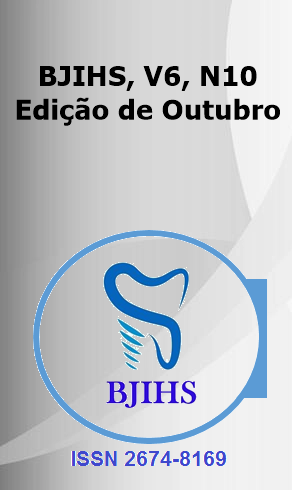Abstract
Migraine, a debilitating form of headache, affects about 15% of the global population, with a higher prevalence in women. In Brazil, the increase in hospital admissions due to migraine reflects its impact on public health and the quality of life of patients. Between 2013 and 2023, 84,985 hospitalizations for migraine headaches were recorded, peaking in 2019 and 2023. The Southeast region concentrated most cases (32.67%), and the most affected age group was between 30 and 39 years old. Despite advances in treatment, such as the use of CGRP receptor antagonists, challenges remain in accessing these therapies, especially in underprivileged regions. Additionally, most hospitalizations (94.28%) were emergency cases, suggesting the need to improve preventive management of migraines. Public health strategies focused on education, prevention, and strengthening primary care are essential to reduce hospitalizations and improve patients' quality of life.
References
BRASIL. Sistema de Informações Hospitalares do SUS (SIH/SUS). Brasília: Ministério da Saúde, 2023. Disponível em: http://www.datasus.gov.br. Acesso em: 27 set. 2024.
CHARLES, A. The pathophysiology of migraine: implications for clinical management. The Lancet Neurology, v. 12, n. 3, p. 445-455, 2013.
GOADSBY, P. J.; HOLLAND, P. R.; MARTIN, V. T. Pathophysiology of migraine: A disorder of sensory processing. Physiological Reviews, v. 97, n. 2, p. 553-622, 2017.
LIPTON, R. B. et al. Migraine prevalence, disease burden, and the need for preventive therapy. Neurology, v. 86, n. 3, p. 123-134, 2016.
SAKAI, F.; ICHIOKA, M. Gender differences in migraine. Neurological Sciences, v. 41, n. 2, p. 1165-1170, 2020.
TEPPER, S. J. Antibodies to calcitonin gene-related peptide: clinical utility in migraine. Therapeutic Advances in Neurological Disorders, v. 11, p. 175-190, 2018.
BAILEY, J. M.; ROBERTSON, D. M.; SHEPHERD, J. R. Environmental triggers of migraine in urban populations: A systematic review. Journal of Neurological Sciences, v. 420, p. 118-124, 2020.
SMITH, T. R.; JOHNSON, P. Q.; KLEIN, R. Access to migraine prevention in lower socioeconomic populations: A barrier to health equity. Neurology and Public Health, v. 45, n. 5, p. 321-329, 2019.

This work is licensed under a Creative Commons Attribution 4.0 International License.
Copyright (c) 2024 Andressa Bianca Reis Lima, Guilherme Bravim Barreto Campello, Jhennifer Santos Botelho, Rebeca Steffane Arruda Henriques, Aline Klug Costa Pereira, Pietra Araújo Calheiros de Lima, Cristian Lucas Costa Silva, Diogo Antonio Paiva Gomes, Dâmaris Gonçalves Vieira, Ariadne dos Santos Ferraz, Érica Mieko Takamori Verri, Janival José Takamori Verri, Paulo Victor Santos de Carvalho, Yasmin Nascimento Frasão Cavaleiro de Macêdo, Laryssa Menegueli de Carvalho, Rebeca Rivera Justiniano e Silva
